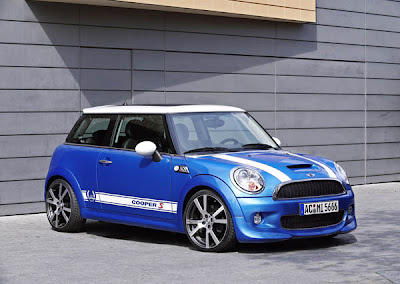The ISR transmission is unique among road-going vehicles, guaranteeing the fastest shifting time (only 50 milliseconds) and a highly emotional shift feel, while the lightweight chassis with pushrod suspension delivers absolute handling precision and competition-level performance. The expressively-designed interior offers hi-tech features ranging from the TFT cockpit display with Drive Select Mode system. The Aventador will be built to the very highest quality standards in an all-new production facility in Sant'Agata Bolognese.
"With the Aventador LP700-4, the future of the super sports car is now part of the present. Its exceptional package of innovative technologies is unique, its performance simply overwhelming," says Stephan Winkelmann, President and CEO of Automobili Lamborghini. "The Aventador is a jump of two generations in terms of design and technology, it's the result of an entirely new project, but at the same time it's a direct and consistent continuation of Lamborghini's brand values. It is extreme in its design and its performance, uncompromising in its standards and technology, and unmistakably Italian in its style and perfection. Overall, the dynamics and technical excellence of the Lamborghini Aventador LP700-4 makes it unrivalled in the worldwide super sports car arena."
Aventador: the name of one of the most courageous of all bulls
According to its tradition, Lamborghini's new flagship bears the name of a bull - naturally, a particularly courageous specimen from the world of the Spanish Corrida. Aventador was the name of a bull that entered into battle in October 1993 at the Saragossa Arena, earning the "Trofeo de la Peña La Madroñera" for its outstanding courage.



The doors open upward - of course
Truly impressive proportions come from an overall length of 4,78 meters (188.19 in.) matched with an impressive width of 2,26 meters (88.98 in.) including the exterior mirrors, and further accentuated by an extremely low height of just 1.136 mm (44.72 in.). It goes without saying that both doors of the carbon-fiber monocoque open upward - a feature that was first introduced in the now legendary Countach and then used for subsequent V12 models such as Diablo and Murciélago. However, the Aventador also evokes its immediate predecessor the Murciélago - electronically managed air intakes open depending on the outdoor temperature and the need for cooling air,ensuring maximum aerodynamic efficiency. And for those whishing to flaunt the heart of their Lamborghini, the optional transparent engine bonnet exhibits the twelve-cylinder engine like a technical work of art in a display case.
Exclusive and high-tech interior
The Aventador's spacious interior combines the fine exclusivity of premium materials and perfect Italian craftsmanship with state-of-the-art technology and generous equipment. The red switch cover on the broad center tunnel encloses the start button used to awaken the twelve-cylinder. The interior is dominated by a next-generation dashboard - as in a modern airplane, the instruments are presented on a TFT-LCD screen using innovative display concepts. A second screen is dedicated to the standard-fit multimedia and navigation system.
Carbon-fiber monocoque
The new Lamborghini flagship has a full monocoque. The entire occupant cell, with tub and roof, is one single physical component. This ensures extreme rigidity and thus outstanding driving precision, as well as an extremely high level of passive safety for the driver and his passenger. The entire monocoque weighs only 147.5 kilograms (325.18 lb).
The monocoque, together with the front and rear Aluminium frames, features an impressive combination of extreme torsional stiffness of 35,000 Newton meters per degree and weighs only 229.5 kilograms (505.9 lb).
Maximum revs, amazing sound
For the Lamborghini Aventador LP700-4, the engineers in Lamborghini's R&D Department have developed a completely new high-performance power unit - an extremely powerful and high-revving, but very compact power unit. At 235 kilograms (518 lb), it is also extremely lightweight. A V12 with 515 kW (700 hp) at 8,250 rpm sets a whole new benchmark, even in the world of super sports cars. The maximum torque output is 690 Newton meters (509 lb-ft) at 5,500 rpm. The extremely well-rounded torque curve, the bull-like pulling power in every situation, the spontaneous responsiveness and, last but not least, the finely modulated but always highly emotional acoustics are what make this engine a stunning power plant of the very highest order.
Innovative transmission for maximum performance
Engineers at Lamborghini have created the perfect mate for the new twelve-cylinder engine with the highly innovative ISR (Independent Shifting Rods) transmission. The development objective was clearly formulated - to build not only the fastest robotized gearbox, but also to create the world's most emotional gear shift. Compared with a dual-clutch transmission, not only is the ISR gearbox much lighter, it also has smaller dimensions than a conventional manual unit - both key elements in the field of lightweight engineering for super sports cars.


































